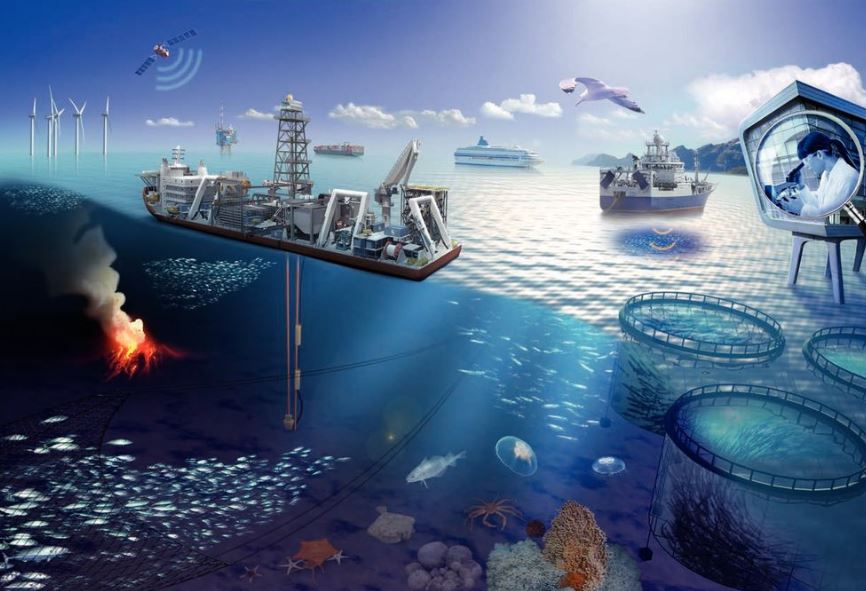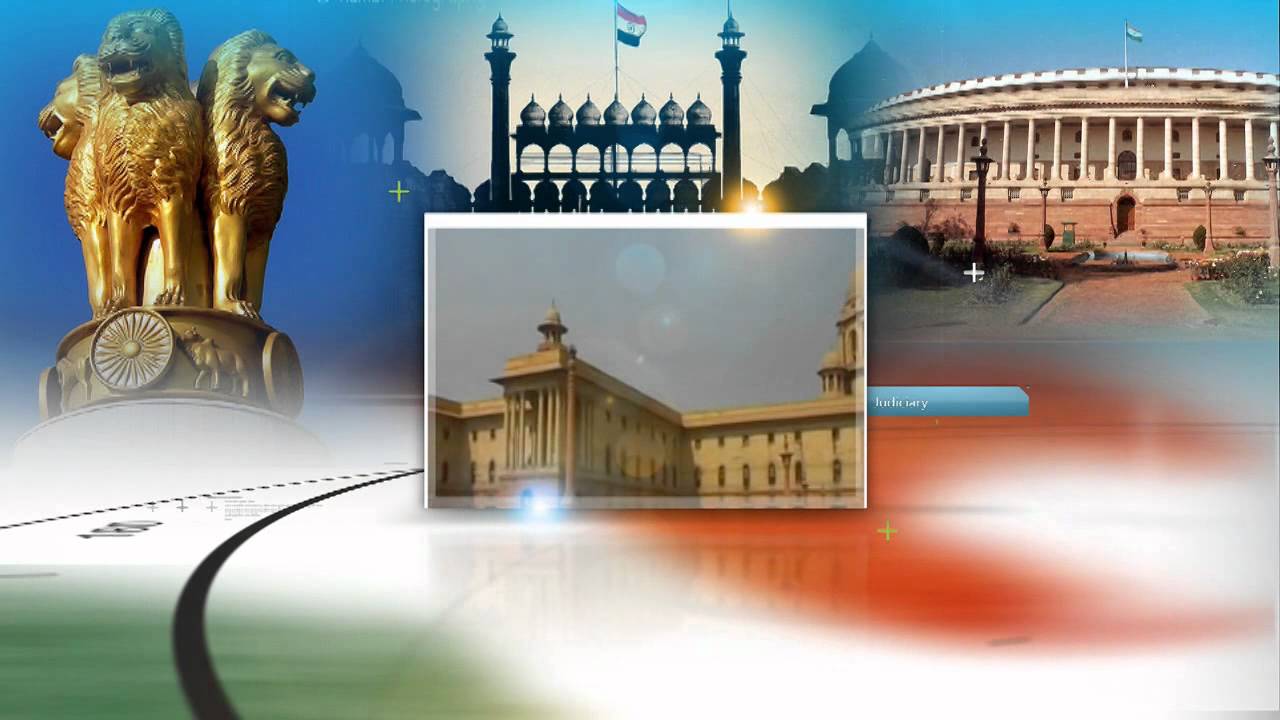Into the Deep: India’s Journey to Harness the Ocean’s Power
Introduction
The ocean is vast and mysterious, covering over 70% of our planet. It holds countless secrets and immense potential — from rare minerals on the seabed to powerful clues about our climate. For a country like India, which is surrounded by water on three sides and blessed with a vast Exclusive Economic Zone (EEZ), the ocean is more than just a boundary; it is an opportunity. With the recent testing of its Matsya-6000 submersible, capable of diving 6,000 metres under the sea, India has joined a small group of countries with the ability to send humans into the deep. But this achievement is just the beginning of a long journey.
As India sets its sights on the deep sea, it faces both promise and peril. The promise lies in the riches hidden beneath the ocean floor — minerals like cobalt and nickel, gas hydrates, new medicines from marine life, and important data to understand climate change. The peril comes from the extreme conditions of the deep sea, the high cost of technology, and rising tensions with other countries like China, which are racing ahead in deep-sea technology. This essay explores the themes, ideas, and challenges surrounding India’s deep-sea ambitions. It shows how science, strategy, and sustainability must go hand-in-hand to ensure India can safely and smartly dive into the depths.
The Ocean: A Hidden Treasure Chest
Imagine a giant underwater treasure chest — this is what the deep ocean represents. It contains:
- Polymetallic Nodules: These are like round rocks lying on the ocean floor, rich in metals such as manganese, nickel, cobalt, and copper. These metals are crucial for making batteries, smartphones, and renewable energy technology.
- Gas Hydrates: Frozen mixtures of water and methane gas. They are believed to hold more energy than all the world’s fossil fuels combined!
- Marine Life: Some organisms living in the deep sea have special chemicals that could be used to make medicines, especially for diseases that are hard to treat.
- Climate Data: By studying the ocean, scientists can understand how the Earth’s climate is changing, and how to respond to global warming.
India’s EEZ stretches 200 nautical miles (about 370 km) from its coast and covers more than 2.2 million square kilometres. The average depth in this region is 3,741 metres — deeper than four Burj Khalifas stacked on top of each other! Exploring this vast area can help India find new energy sources, improve food security through better fishing practices, and even discover new life forms.
The Blue Economy: More Than Just Fish
The “blue economy” includes all the economic activities connected to the ocean, and for India, it plays a very important role. It covers fishing and aquaculture, which give food and jobs to millions of people, as well as oil and gas exploration, where valuable resources are taken from deep under the seabed. Deep-sea mining is another part, where metals like cobalt and nickel are collected from the ocean floor. Shipping and port activities also form a big part of the blue economy, helping to move goods and trade with other countries. One of the most vital parts is the network of underwater cables. These cables, which are hidden beneath the sea, carry more than 95% of the world’s internet traffic, including important banking and defence data. If even one cable is damaged, it can cause serious problems. That is why protecting these cables is so important. Some countries, like China, have made special machines that can cut these cables underwater, raising concerns about safety and security in times of conflict or tension.
The Deep Ocean Mission: India’s Big Leap
To unlock the full potential of the ocean, India started the Deep Ocean Mission (DOM) in 2018 with several important goals. One of the main aims is to send people deep under the sea using the Matsya-6000 submersible. Through a project called Samudrayaan, India hopes to carry three humans down to 6,000 metres by 2026. Another goal is to carefully map the ocean floor to discover and study valuable resources like minerals and gas hydrates. The mission also focuses on building advanced technology such as underwater robots, vehicles, sensors, and special communication tools that can work in the deep sea. In addition, DOM supports scientific research to learn more about how the ocean influences weather patterns and climate change. One more goal is to help solve water problems by developing ocean-based desalination systems, which can turn seawater into fresh water. This mission is as bold and exciting as India’s Gaganyaan space mission, showing the country’s strong determination to explore new frontiers in both space and sea.
Challenges in the Deep
But exploring the deep sea is not easy. It is one of the most extreme environments on Earth. Let us look at the main challenges:
- Extreme Pressure
Water pressure increases the deeper you go — roughly one atmosphere (atm) every 10 metres. At 6,000 metres, pressure is around 600 atm, which is 600 times more than what we feel at the surface. That is like having the weight of 3,000 cars pressing down on a small area. To survive this, submersibles need to be made from super-strong materials.
- Sound and Communication
Unlike on land, you cannot use radio waves underwater. Instead, sound is used to communicate. But even sound has trouble travelling underwater because it is affected by temperature, pressure, and saltiness. That is why scientists use Very Low Frequency (VLF) and Extremely Low Frequency (ELF) sound waves. These travel farther, but need special technology to send and receive.
- Materials and Corrosion
Saltwater is harsh. It rusts metal and damages equipment. Submersibles and robots need to be made of advanced alloys and materials that can last long in deep-sea conditions.
- Technology Dependence
Right now, India still depends on other countries for some parts of its deep-sea equipment. To become truly independent, India needs to develop its own robots (called AUVs and ROVs), better sonar systems, and artificial intelligence tools for underwater missions.
Strategic Importance: Oceans and Security
Oceans are no longer just calm places filled with fish and coral reefs; today, they have become important zones of global competition and strategy. Countries are now racing to explore and control the deep sea. China, for instance, has built the world’s largest group of submersibles and is spending a lot on deep-sea research. It has even created a special device that can cut underwater cables, which could be used to disturb communication during times of conflict or tension. Because of this, deep-sea exploration is no longer only about science or the economy — it has become a serious issue of national security. India must take strong steps to protect its interests under the sea. This includes using underwater sensors and surveillance systems to keep watch over its waters, creating advanced technology that can be used for both peaceful research and defence, and guarding its undersea cables and pipelines from harm. India must also train skilled experts in marine science, technology, and deep-sea operations to keep up with the changing times and growing challenges.
What India Needs to Do
For India to succeed in its deep-sea mission, it must act swiftly and wisely by taking a number of important steps. First, India should set up special research centres focused only on the ocean, like the famous Scripps Institution in the U.S. or COMRA in China. These centres would help train scientists, engineers, and deep-sea divers. Next, the way the government manages ocean matters needs to improve. At present, it is only a department, but it should become a full Ministry of Ocean Development with a cabinet minister in charge. This would help bring more attention, money, and better teamwork between departments. India must also invest a lot more in deep-sea science, new equipment, and expert training, as such research is costly. Working with private companies and international partners like the International Seabed Authority (ISA) can also help by bringing in new ideas and support. Finally, India needs a clear 10-year plan with goals, timelines, and proper funding to keep the mission moving forward smoothly, without delays or confusion.
Conclusion: The Future Lies Beneath
India stands at an exciting crossroads. With Matsya-6000 and the Deep Ocean Mission, the country has made a bold move into the final frontier on Earth — the deep sea. But the journey has just begun. There are difficult scientific problems to solve, expensive technologies to develop, and serious security threats to guard against.
If India is to truly become a deep-sea power, it must dive deep — not just into the ocean, but into planning, investment, and international cooperation. The rewards are immense: energy security, economic growth, new medicines, and a stronger position in global politics. The ocean’s depths may be dark and cold, but they are also filled with hope — if we are brave and wise enough to reach for them.


